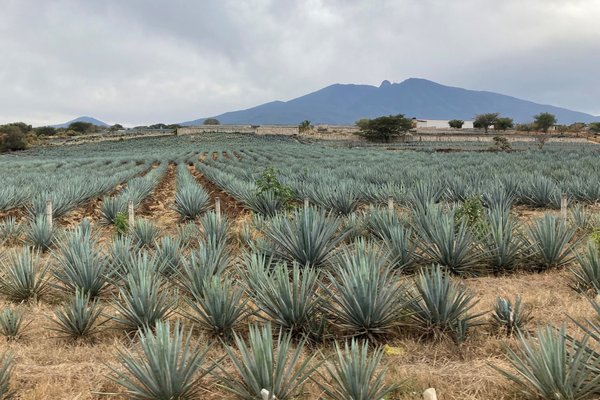Mexico
Tequila
The Agave Landscape and Ancient Industrial Facilities of Tequila is an area that shows agave cultivation and represents the growth of tequila distillation since the 17th century.
Tequila is the liquor produced from the blue agave, using a mix of pre-Hispanic and European methods. Its growing production over the past 250 years has led to a distinctive, working landscape of blue agave fields, with distilleries, factories, towns and haciendas. Today, the agave culture is seen as part of Mexico's national identity and is known worldwide.
Community Perspective: To discover more about the history and manufacture of Tequila, you can do a guided tour of one of the distilleries in Tequila (a very touristy affair) and see the large agave fields near El Arenal. Clyde recommends the more intimate setting of the Tres Mujeres distillery and also managed to visit the pre-Columbian archaeological site of Guachimontones, which is also part of the core zone, though unrelated to the liquor.
Site Info
Official Information
- Full Name
- Agave Landscape and Ancient Industrial Facilities of Tequila (ID: 1209)
- Country
- Mexico
- Status
-
Inscribed 2006
Site history
History of Tequila
- 2006: Inscribed
- Inscribed
- Type
- Cultural
- Criteria
- ii
- iv
- v
- vi
Links
- UNESCO
- whc.unesco.org
- Official
-
- inah.gob.mx — Archaeological site of Guachimontones
- rutadeltequila.org.mx — The Agave Landscape
- Related
-
- en.wikipedia.org — Wikipedia on the Teuchitlan Archaeological site of Guachimontones
- en.wikipedia.org — Teuchitlan tradition
- en.wikipedia.org — Tequila on Wikipedia
All Links
UNESCO.org
- whc.unesco.org — whc.unesco.org/
Official Website
- inah.gob.mx — Archaeological site of Guachimontones
- rutadeltequila.org.mx — The Agave Landscape
Related Resources
- en.wikipedia.org — Wikipedia on the Teuchitlan Archaeological site of Guachimontones
- en.wikipedia.org — Teuchitlan tradition
- en.wikipedia.org — Tequila on Wikipedia
Community Information
- Community Category
- Human activity: Agriculture
- Cultural Landscape: Continuing
Travel Information
Recent Connections
-
Perfect Inscriptions
2006 -
Most beautiful villages
Tequila is among Mexico's Pueblos Mágic… -
Art Nouveau
Hacienda La parrena, El Arenal: The bui…
Connections of Tequila
- Trivia
-
-
Cultural sites closely connected to volcanoes
foothills of the Tequila Volcano -
On Banknotes
2000 peso note of G-series shows Dry forest ecosystems represented by the Mexican long-nosed bat and Tequila agave landscape
-
- Architecture
-
-
Neoclassical architecture
El Martineno Distillery, Tequila (1870) -
Art Nouveau
Hacienda La parrena, El Arenal: The buildings mostly date from the early 1800s but the chapel was re-fitted in Art Nouveau style. (AB ev)
-
- World Heritage Process
-
-
First sites filling gaps cited by ICOMOS
Industrial landscape / non vineyard agricultural landscape (2006)
-
Industrial Landscapes
-
Perfect Inscriptions
2006
-
- Human Activity
-
-
Locations for playing sport
Teuchitlan site of Guachimontones, ball court -
Irrigation and drainage
Guachimontone
-
- Constructions
- WHS on Other Lists
-
-
World Monuments Watch (past)
Teuchtitlán-Guachimontones (2008)See www.wmf.org
-
Most beautiful villages
Tequila is among Mexico's Pueblos Mágicos ("Magical Towns")
-
- Timeline
-
-
Built in the 19th Century
Most of the Haciendas and Distilleries date from the 19th century when the growth in international trade in Tequila led to a large increase in production and industrialisation took place
-
- Science and Technology
-
-
Excavated by American Universities
Teuchitlan - University of Illinois -
Recently discovered
Guachimontes "The site was discovered in 1970 and the important research only began in 1996." (wiki)
-
News
No news.
Recent Visitors
Visitors of Tequila
- Alberto Rodriguez Gutierrez
- Alejandro Lau
- Alexander Lehmann
- Alex Baranda
- Anna Wludarska
- Argo
- Atila Ege
- basementonline
- Bill Maurmann
- brendairala
- Can SARICA
- Carlo Sarion
- Casey
- Cheryl
- Christine
- Clyde
- czesioszpachelka
- Daniela Hohmann
- Dan Pettigrew
- David Aaronson
- Don Irwin
- Dorejd
- Els Slots
- Fede1203
- Feldhase
- Filip Murlak
- Frédéric M
- GeorgeIng61
- Gernot
- H Beswick
- headventure
- Iain Jackson
- Ivan Rucek
- Jana and Matt
- Jarek Pokrzywnicki
- Javier Coro
- Jean Lecaillon
- Jens
- Joel on the Road
- Kasper
- kathryn.park
- Ken DJ
- kiank37
- Kurt Lauer
- Lara Adler
- Loic Pedras
- Lucas Del Puppo
- Luis Filipe Gaspar
- manuel011197
- Martin
- Martina Rúčková
- Michael Novins
- Mikko
- MMM
- montgomw
- Nihal Ege
- petar
- Petteri
- Philipp Leu
- Philipp Peterer
- pressdm
- puessergio
- Randi Thomsen
- Reza
- Roger Ourset
- Roman Bruehwiler
- Sclowitz
- scubarrie
- Sergio Arjona
- Shandos Cleaver
- Slavi
- Solivagant
- Stanislaw Warwas
- Sutul
- Svein Elias
- Szucs Tamas
- Tamara Ratz
- Ted Coombs
- TheDarlingLife
- Thomas Buechler
- Thomas van der Walt
- Traveling Girl
- triath
- Wojciech Fedoruk
- Xiquinho Silva
- ZCTLife
- Zizmondka
- Zoë Sheng
- Zos M
Community Reviews
Show full reviews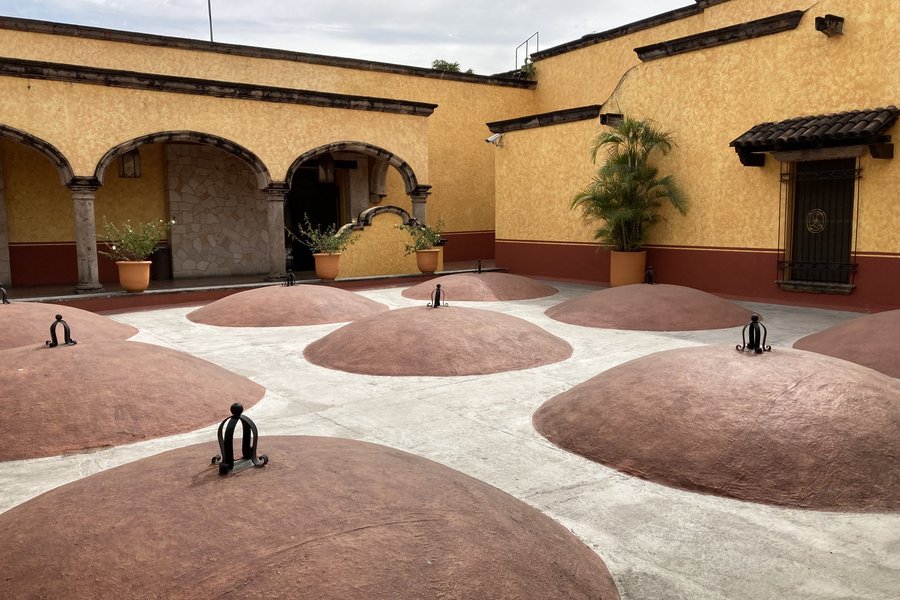
The town of Tequila is only about an hour from Guadalajara, and there are many different distilleries to visit. There are many tours, easily arranged but some seemed pricey to me. I don’t drink as much as when I was younger, and I don’t like taking tour buses. So I just did a solo day trip to one distillery, Tres Mujeres. Even though I had toured a much fancier tequila distillery—with a Mariachi band—years before, I appreciated the simple working nature of this one. There weren’t any tour buses, so I had the place almost to myself. The guides spoke excellent English and answered all my questions.
These days tequila is made in towns outside Tequila and in several states outside Jalisco, but this dusty farm town is the best place to get a sense of the history. Tequila is a fusion of Spanish winemaking and native brewed agave wine, pulque. There are many types of mezcal, but tequila is usually more refined and always made with blue agave in designated areas.
Reading is not the right way to learn about tequila. You really need to smell the various processes and then taste the different products to understand. That’s the best part about coming here, and you can bring back a nice souvenir.
I’m giving only three stars, because my expectations of a world heritage site are very high. Since there are many different distilleries (and tour agents) operating at different standards, your experience here …
Keep reading 0 comments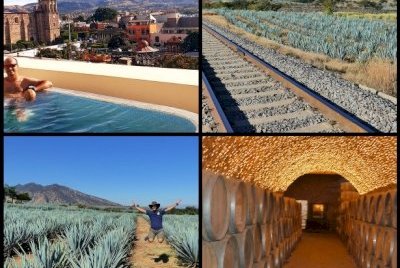
I visited this WHS in January 2022 on two separate legs of my Mexico road, before and after visiting the Islas Marietas, marked by the loss of my camera due to technical failure and managing to find the exact same replacement online for half the price on my return to Tequila proper.
Due to this mishap, I allowed more time to explore the area and components of this WHS. First I focused on the agave landscape around El Arenal which is by far the most scenic and also the busiest, with several workers employed in the fields loading and unloading their trucks with the main raw material. Having a rental car or a bike helps to look out for the tiny roads with the most scenic spots for photography. The only drawback, a bit like in Burgundy, France, is the huge highway which passes right through the agave landscape. By far less disruptive are the railway tracks which are a great alternative if you want to visit the area in style with the expensive Jose Cuervo Express train+bus tour at sunrise or sunset departing from Tequila.
Be aware that most if not all attractions in Tequila and its surroundings are very touristy, for locals and foreigners alike, so early visits (in Mexico this is conveniently stretched to before 11am) will prove essential to beat the tour groups and the bulk of the tourist circus (especially in Tequila proper, with long vehicles in all shapes and forms (I've seen …
Keep reading 0 comments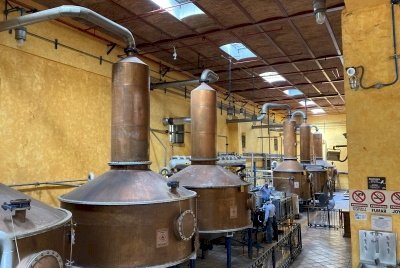
In January 2022, I made my way to Tequila by public transport from Guadalajara. I found a bus company with the promising name of “Quick” at the old, dilapidated inner-city bus station that has frequent departures during the day. One way cost was 90 pesos (4 EUR). Unfortunately, the ride wasn’t all that quick – it took 2 hours. An hour is already spent on leaving the sprawling city of Guadalajara. On the way back I disembarked as early as possible, at Periferico Sur, where I caught the Tren Ligero (above ground subway) to the city center.
The landscape only gets interesting near the town of El Arenal, the first of the three included in the core zone. Here you’ll really start to notice the large agave fields. Their blueish colour makes them a fine sight I think.
I got off the bus at Tequila - a real tourist town, with a long main street (“the strip”) lined with souvenir shops that leads to the main square. I already got offered a tour to a tequila factory several times, but I first wanted to see what options there are. It appears that you can be driven around here in a tourist bus in the shape of red pepper or a wooden barrel. I opted for a more sober tour of a factory, that of Jose Cuervo on the main square. This is also a thriving business: there are tours throughout the day, and you can go for a …
Keep reading 0 comments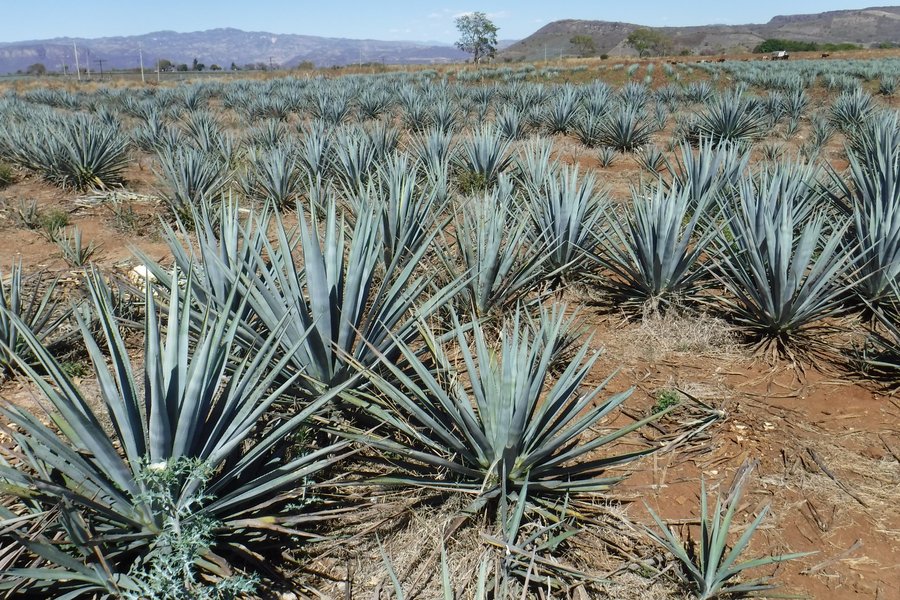
I used a different mean of transportation than Solivagant to visit Tequila, but my experience there was quite similar. As my interest in Tequila was rather weak and my time a little limited, I chose to visit on a half-day tour from Guadalajara. Many tour operators are based in Guadalajara centro and I thought it would allow viewing more of this vast landscape while being less time-consuming.
The tour I took included the visit of a distillery and then some free time in the town of Tequila. Like Solivagant, I think the history and the process of making Tequila is interesting, but I saw very few interesting stuff in the distillery. The visit was mostly aimed at learning how to taste the different kinds of Tequila. We then had way too much free time in the distillery to sample food at the restaurant and buy things. I used this time to walk around a bit and enjoy the agave landscape and the cellars where Tequila is aged. The agave landscape is the most impressive thing this site has to offer in my opinion. Wherever you look, fields are covered with this blue plant. The landscape with the volcano in the background is thus quite good-looking.
The town of Tequila itself is rather uninteresting. It looks like most Mexican towns with a nice zocalo and a church. I believe going more to the countryside might be more interesting for someone looking for a genuine Tequila experience. Tequila deserve to be a …
Keep reading 0 comments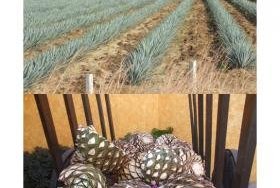
Perhaps we should state right from the beginning that we don’t drink Tequila! So I guess that the Agave Landscape was up against it from the start with us and we certainly didn’t find it a particularly satisfactory excursion. I tried to tell myself rationally that what I was seeing was the equivalent of St Emelion in France, or Tokajii in Hungary, or Lavaux or Alto Duro ….. (there do seem to be a rather excessive number of European wine-based “cultural landscapes” which have made it onto the UNESCO list, and there are more on the T List too)! If, as a drink, Tequila can have the quality and variety of a fine Cognac or good wine and has its history engraved deeply in the countryside and culture of Mexico – then why shouldn’t its main area of growth and manufacture be similarly inscribed? Well, I guess it should – but somehow the dusty fields of Blue Agave (photo 1) didn’t seem as attractive as a hill side of vineyards! And I am afraid that the towns of Arenal, Amatitlan and Tequila couldn’t match the beauty of a French village – though the latter has a pleasant enough square and side streets. The saving grace for the Tequila landscape was its distant volcanic horizon.
It WAS interesting to discover more about the history and manufacture of Tequila. One can appreciate the back-breaking hard work which goes into growing, harvesting and preparing this prickly unforgiving plant (It may look like a …
Keep reading 0 comments
